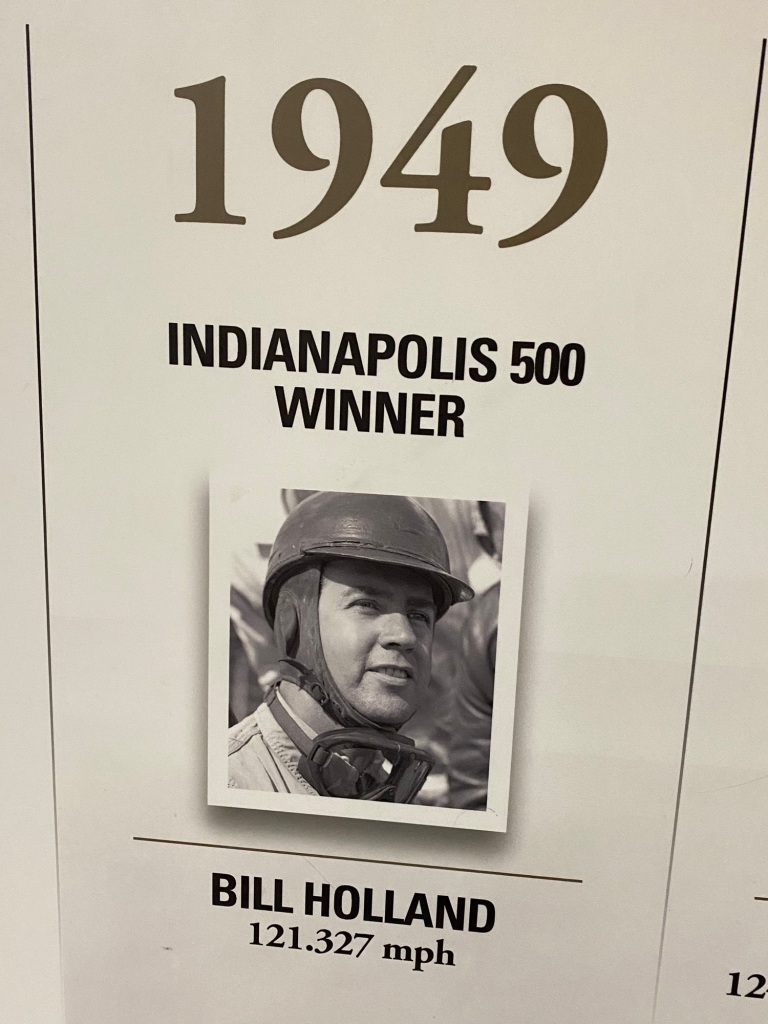Currently, in my life I lost a good friend. Currently, in the IndyCar world there is a huge scandal about Team Penske illegally using push to pass. All of this makes it the perfect time for a little escape to look back at the 1951 Indianapolis 500 and learn more about Lee Wallard. I could use the distraction, how about you?
Even among Indy 500 fans, Lee Wallard is not a name you often hear. I wonder what is the first thing that comes to mind as you hear his name. For me, I wouldn’t even be able to say for sure that he was a 500 winner. So let’s dive in and learn more about Lee Wallard.
There were 12 rookies in the 1951 race, 4 of them finished in the top 10.
Lee Wallard is the driver known for discovering “the groove” at the speedway. Wallard was the first ever to complete the race in under 4 hours, he was a popular winner and was dubbed by the press “The Cinderella Man” ( I have heard the term, Cinderella Man, but would not have been able to tell you who that was). I’m already learning a lot.
Tony Bettenhausen was driving for Murrell Belanger. Bettenhausen wanted to drive for the Meyer and Drake team on the dirt tracks but wished to drive for Lou Moore at Indianapolis. Bettenhausen suggested Lee Wallard for the car in 1951- bet he has regretted that over the years. Bettenhausen’s car spun out late in the race so he definitely made a bad decision.
Lee Wallard was born in Schenectady, New York in 1935. He started his racing career at dirt tracks. His first championship event was in 1941.
At age 40, Wallard won the Indianapolis 500 in a car that Bettenhausen decided not to drive, Bettenhausen opted for the newer front-wheeled drive cars. Walllard led 159 of the 200 laps. Wallard took the checkered flag a full three minutes before second place Mike Nazaruk finished. Only eight cars finished the race, Mauri Rose was among those who retired early.
While Wallard led 159 laps, the race win was not easy. The car bumped around tremendously due to the right rear shock mounting breaking during the race. Next, the exhaust pipe broke and eventually even the brakes gave out with about 12 laps to go. Wallard pushed on though, his discomfort was made even greater from the race suit he wore. It was not mandatory to wear a flame retardant suit but Wallard chose to wear one. However, the process for making a flame retardant suit was to mix boric acid, borax and water and soak the suits in the solution. The pounding he took in the car, especially over the bricks, coupled with the choice to not wear an undershirt proved to be a bad combination. Wallard suffered severe skin chaffing and after the award ceremony he was treated in the infield hospital. While there he also learned that he lost approximately 15 pounds since breakfast.
Four days after the race Wallard was severely burned in a racing accident in Pennsylvania. Wallard required 27 skin grafts. He attempted to qualify for the Indy 500 again in 1954 but was unable to compete due to loss of muscle tissue from his burns, making it impossible for him to handle the car.
Wallard retired and moved to Florida. He died of a heart attack in 1963.
Addition notes from the 1951 Indianapolis 500-
– It was Bill Vukovich’s rookie year. He finished 29th.
– Actress, Loretta Young, gave Wallard the celebratory kiss.
– Duke Nalon won the pole in a Novi.

In the modern day IndyCar world we learned today that David Malukas was released from his contract with the Arrow McLaren team. Malukas was injured in a biking accident and has been unable to drive. Since no date is given for his recovery the team decided to release David. I hate this news as David is one of my favorite drivers. I was looking forward to seeing how he did on the Arrow team. Such a disappointment. I hope he has a complete recovery and is picked up by a team so he can prove what a skilled driver he is.



